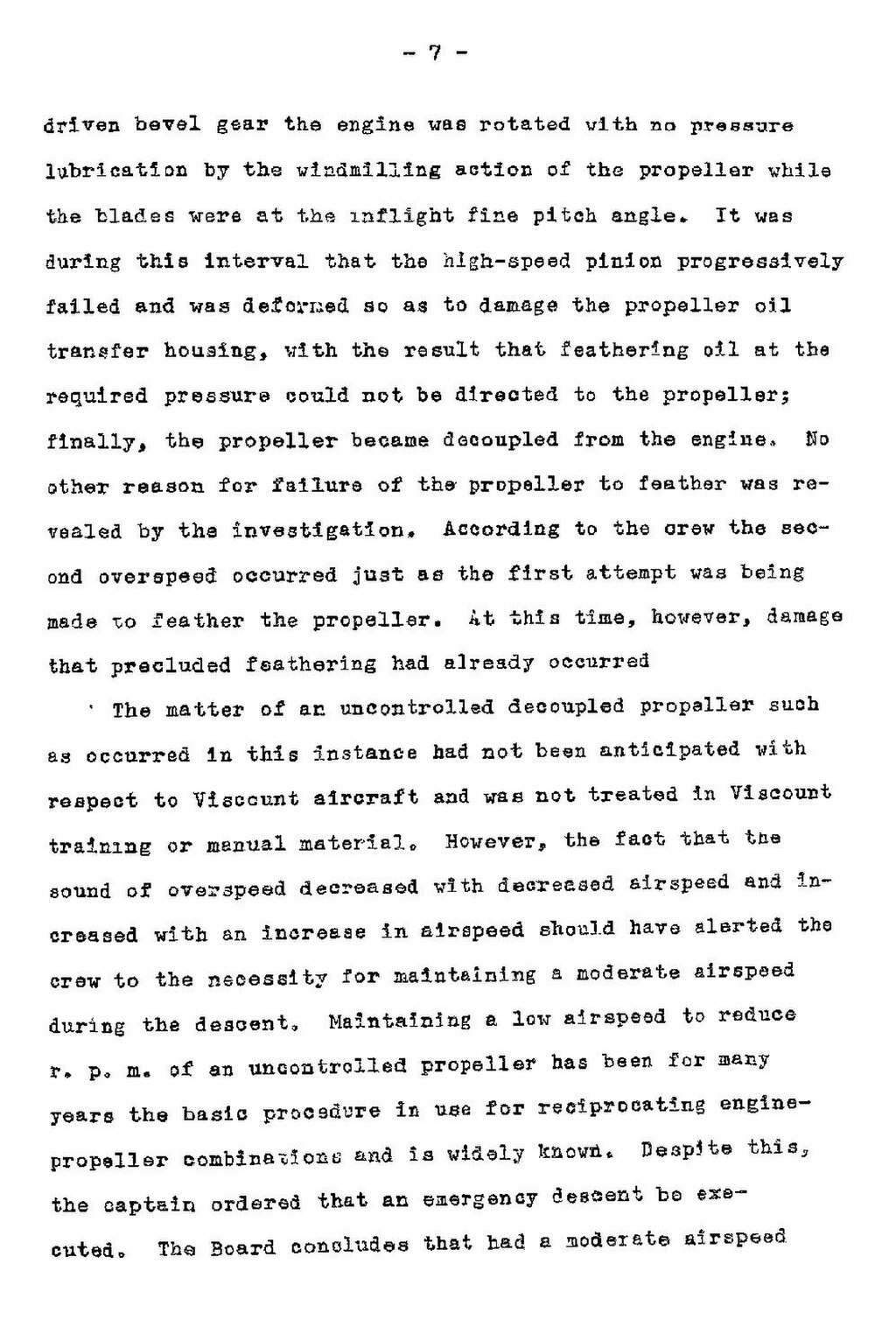- 7 -
driven bevel gear the engine was rotated with no pressure lubrication by the windmilling action of the propeller while the blades were at the inflight fine pitch angle. It was during this interval that the high-speed pinion progressively failed and was deformed so as to damage the propeller oil transfer housing, with the result that feathering oil at the required pressure could not be directed to the propeller; finally, the propeller became decoupled from the engine. No other reason for failure of the propeller to feather was revealed by the investigation. According to the crew the second overspeed occurred just as the first attempt was being made to feather the propeller. At this time, however, damage that precluded feathering had already occurred.
The matter of an uncontrolled decoupled propeller such as occurred in this instance had not been anticipated with respect to Viscount aircraft and was not treated in Viscount training or manual material. However, the fact that the sound or overspeed decreased with decreased airspeed and increased with an increase in airspeed should have alerted the crew to the necessity for maintaining a moderate airspeed during the descent. Maintaining a low airspeed to reduce r. p. m. of an uncontrolled propeller has been for many years the basic procedure in use for reciprocating engine-propeller combinations and is widely known. Despite this, the captain ordered that an emergency descent be executed. The Board concludes that had a moderate airspeed
